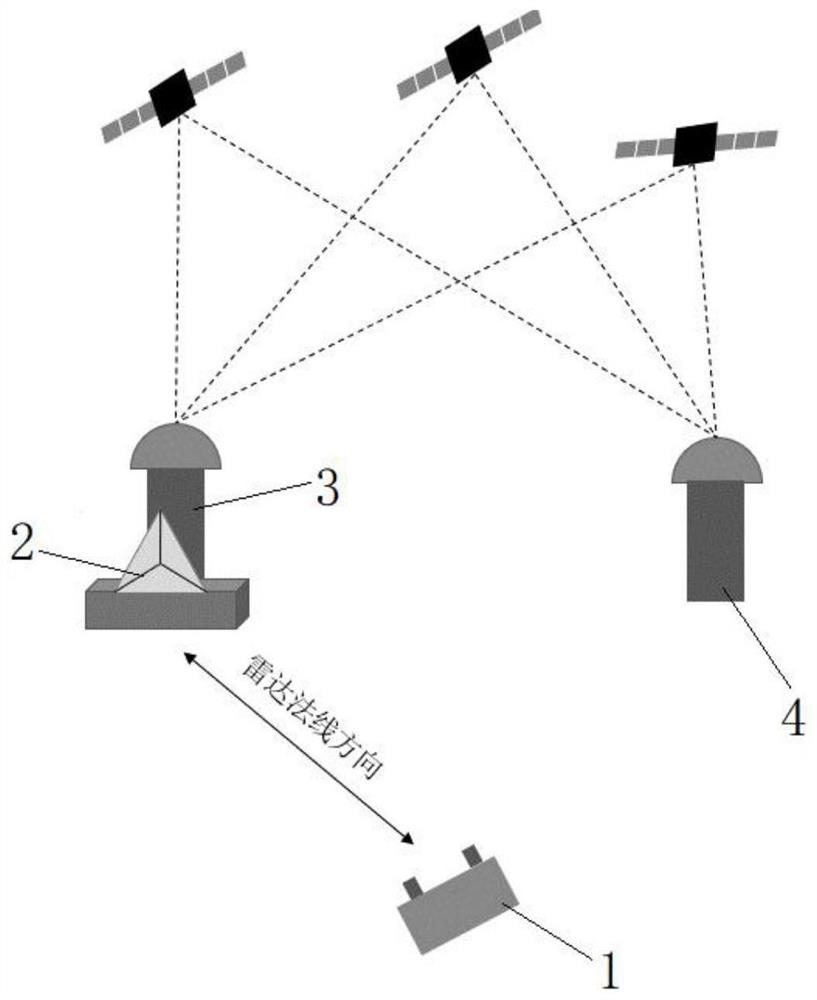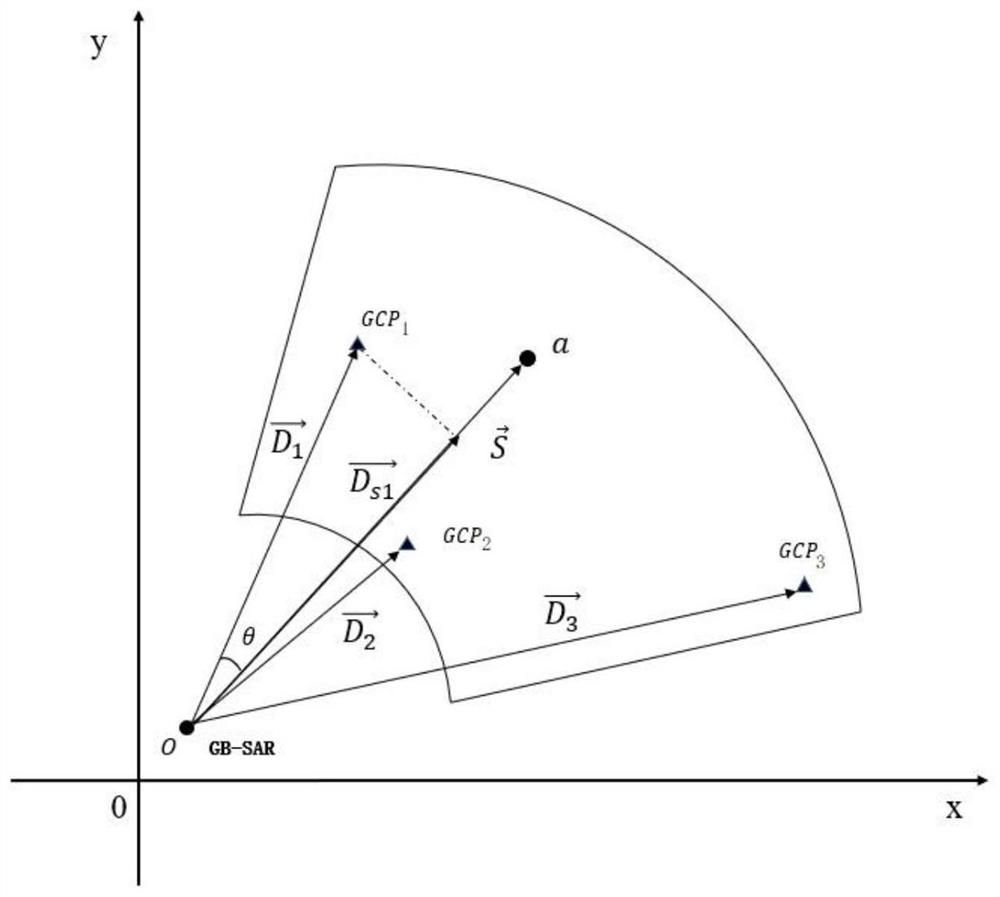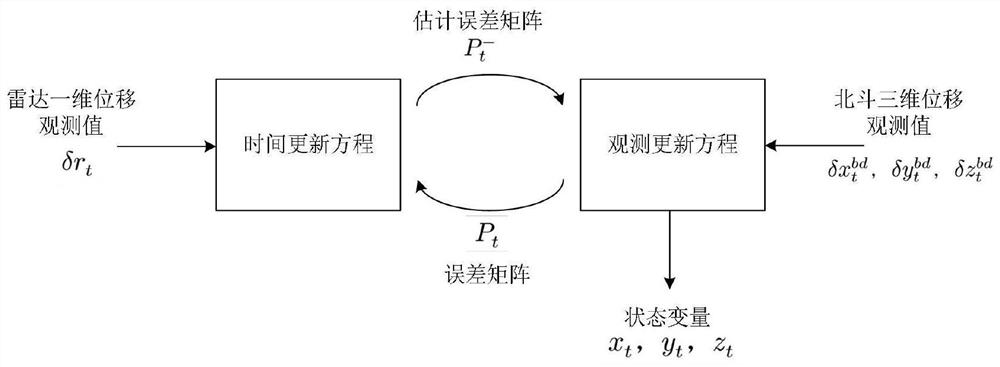Ground-based synthetic aperture radar data noise reduction method
A synthetic aperture radar and data noise reduction technology, which is applied in satellite radio beacon positioning systems, measuring devices, instruments, etc., can solve problems affecting long-term monitoring stability and long-term drift of ground-based radar data, etc.
- Summary
- Abstract
- Description
- Claims
- Application Information
AI Technical Summary
Problems solved by technology
Method used
Image
Examples
Embodiment
[0073] see Figure 1-3 , a ground-based synthetic aperture radar data noise reduction method, comprising the following steps:
[0074] Step S1: deploy at least two joint monitoring stations in the monitoring area of the ground-based radar 1, and deploy a Beidou differential reference station 4 in a stable area;
[0075] Step S2: Measure the deformation measurement value of the joint monitoring station through the ground-based radar, correct the deformation measurement value based on the vector projection distance weighted atmospheric correction method, and obtain the radar observation value after atmospheric correction;
[0076] Step S3: Obtain the three-dimensional displacement measurement value of the joint monitoring station in real time through the Beidou differential reference station;
[0077] Step S4: Use the Kalman filter algorithm to fuse the atmospherically corrected radar observations and three-dimensional displacement measurements to obtain the deformation value...
PUM
 Login to View More
Login to View More Abstract
Description
Claims
Application Information
 Login to View More
Login to View More - R&D
- Intellectual Property
- Life Sciences
- Materials
- Tech Scout
- Unparalleled Data Quality
- Higher Quality Content
- 60% Fewer Hallucinations
Browse by: Latest US Patents, China's latest patents, Technical Efficacy Thesaurus, Application Domain, Technology Topic, Popular Technical Reports.
© 2025 PatSnap. All rights reserved.Legal|Privacy policy|Modern Slavery Act Transparency Statement|Sitemap|About US| Contact US: help@patsnap.com



